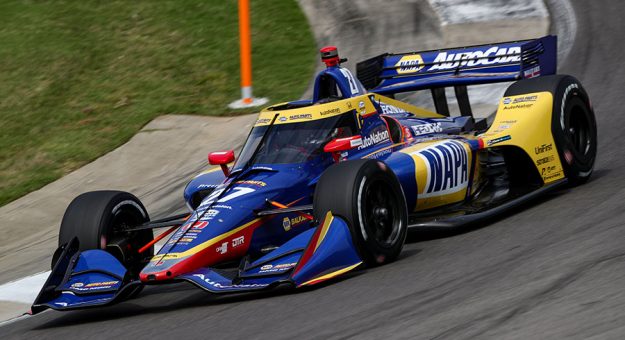Even racers who don’t have a four-second window to excel understand the concept.
NASCAR’s Kyle Larson says he doesn’t turn into an accelerator addict but recognizes it among his counterparts in the Cup Series.
“I would say I have a pretty laid-back approach to life and to competition. I don’t think my personality is different when it’s day-to-day life versus when I strap on a helmet,” Larson said. “I’m pretty laid-back in both. I don’t ‘flip a switch.’ I just don’t get too overly excited. Some drivers are different inside compared to outside the car. I don’t know Joey Logano that well, but he seems like a very nice person that is a great family man. Then, he puts a helmet on and becomes one of the fiercest competitors.”
The psychology behind this transformative power of competition might be as simple as Kevin Harvick’s philosophy: “You have to get every single point you can get every single weekend just to make sure you don’t put yourself in a hole that you can’t get out of.”
Harvick is mentoring his 8-year-old son, Keelan, who is beginning his racing career. Dad said, “I always ask him, ‘Do you want to be good, or do you want to be great? We can teach you how to be either. One’s considerably easier than the other, but not nearly as rewarding.’ So he has learned that what you put in is rewarded by what you get out of it in the results. If you want to be good at it, you have to have your boundaries pushed on a daily basis.”
In IndyCar, two-time Indianapolis 500 winner Takuma Sato might be one of the sport’s most aggressive drivers, but he’s a popular fellow in the paddock.
And three years ago, even Robert Wickens, a genuine friend of 2016 Indy 500 winner Alexander Rossi, called Rossi “ruthless” and said, “He races every corner like it’s the last lap.”
Open-wheel champion Paul Tracy, now an NBC analyst for IndyCar broadcasts and driver in the newly launched Superstar Racing Experience, probably saw a bit of himself in Rossi during two recent Indianapolis 500s.
Rossi was on a mission in 2019, irate about several bitter twists that day. Toward the end of a heart-pounding effort, he said through his radio, “I’ve got a bunch of angry cars behind me. Little do they know – I’m angrier.”
Then last year, Rossi had problems again with a pit stop. He made what race officials called an unsafe release from his pit stall that resulted in contact with Sato. For that, Rossi was sent to the back of the pack. And he made a furious rush toward the front, causing Tracy to say, “He’s got horns coming out of his head, like he’s the devil.”
Tracy sounded shocked, but in a kindred sort of way, he wasn’t at all.
“Rossi is an interesting character, because out of the race car he’s very measured. He’s very calm. He’s quiet. He doesn’t say too much. He’s very measured with his words,” Tracy said. “But when he puts the helmet on, he’s a totally different character. He’s an animal behind the wheel. And I like his driving style. He’s aggressive. He has no problems making moves or banging wheels. I like guys that drive like that. I guess I was kind of that way. When you put the helmet on, I had two different personalities.”
Simon Pagenaud, who beat Rossi to the finish line by two-tenths of a second in that 2019 Indy classic, told NBC Sports’ Nate Ryan, “He can seem so shy. I think he’s very reserved, but he’s got a very strong fire inside that’s boiling and ready to go at any time when he sits in a race car. It’s very interesting to see.”
And it was a revelation for Torrence at how tight an emotional grip competition can have on a racer and how damaging that can be.
“I’ve gotten a lot better handle on that than I’ve had in the past,” he explained. “I’ve dug myself a hole with a lot of people. You only get one chance to make a first impression, and I screwed that up with a lot of folks. So you just go out and you put your best foot forward and try to change people’s perceptions. That’s what I really worked on for the last couple of seasons: not so much wearing my heart on my sleeve and trying to control my emotions better in a competition situation.”
